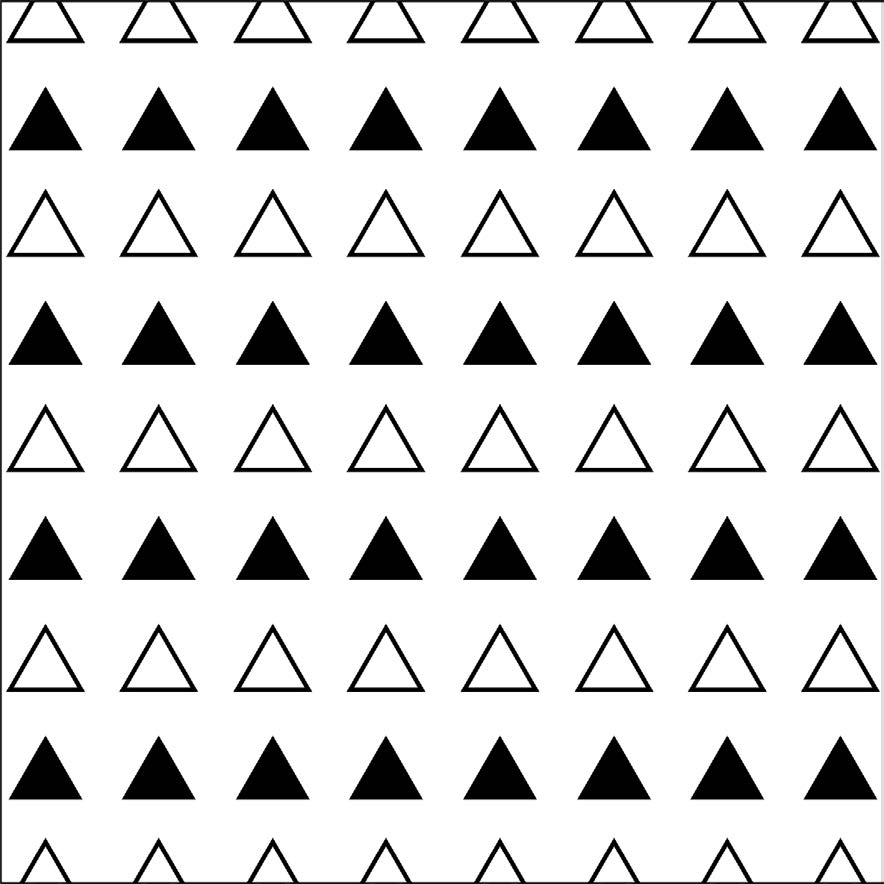A contemporary approach to the Gestalt Theory. Classical and new grouping principles.
##plugins.themes.bootstrap3.article.main##
Abstract
An important part of the knowledges that integrate the current Design's Theory -e.g. resources of the Form- are completely supported on Gestalt conceptions from the past century. There is an obvious disarrangement among the sets Gestalt Theory and Design's Theory. Therefore, it is re-quired a reconsideration of the traditional Gestalt approach, its conceptual basis and major postulates. With this in mind, the present work begins with a rewiew of the key findings and ideas in the Berlin School of Gestalt Psychology. Next, we discuss its empirical and conceptual problems, and indicate how they are addressed in contemporary research on perceptual grouping. Finally, we conclude with a list of the currently active grouping principles. The present article summarizes the main contributions about perceptual grouping, its classical laws and new inclusions.
##plugins.themes.bootstrap3.article.details##

This work is licensed under a Creative Commons Attribution-NonCommercial-ShareAlike 4.0 International License.
- Attribution — You must give appropriate credit , provide a link to the license, and indicate if changes were made . You may do so in any reasonable manner, but not in any way that suggests the licensor endorses you or your use.
- NonCommercial — You may not use the material for commercial purposes .
- No additional restrictions — You may not apply legal terms or technological measures that legally restrict others from doing anything the license permits.
- ShareAlike — If you remix, transform, or build upon the material, you must distribute your contribution under the same license as the original. NOTE: This point applies to numbers 1 to 20 of the magazine with the previous CC-BY-NC-SA 4.0 license. Does not apply to the new CC BY-NC 4.0 license from Volume 11, Number. 21 (2024).
References
Alais D, Blake R, Lee SH. (1998). Visual features that vary together over time group together over space. Nature Neuros- cience; 1:160–164. [PubMed]
Claessens PME, Wagemans J. (2005). Perceptual grou- ping in Gabor lattices: Proximity and alignment. Perception & Psychophysics; 67:1446–1459. [PubMed]
Gepshtein S, Kubovy M. (2007). The lawful perception of apparent motion. Journal of Vision; 7(8):9, 1–15. [PubMed]
Humphreys GW, Riddoch MJ. (1993). Interactions bet- ween object and space systems revealed through neuropsycholo- gy. In: Meyer DE, Kornblum S, editors. Attention and Performance. Vol. 24. Cambridge, MA: MIT Press; pp. 183–218.
Kimchi R, Behrman M, Olson CR. (2003). Perceptual organization in vision. Behavioral and neural perspectives. Mahwah, NJ: Erlbaum.
King DB, Wertheimer M [Michael]. (2005). Max Wertheimer & Gestalt theory. New Brunswick, NJ: Transaction Publishers.
Koffka K. (1935). Principles of Gestalt psychology. Lon- dres, G.B.: Lund Humphries.
Köhler W. (1920). Die physischen Gestalten in Ruhe und im stationären Zustand. Eine natur-philosophische Untersu- chung. Braunschweig. Alemania: Friedr. Vieweg und Sohn. (Traducido y reimpreso como “Physical Ges- talten”. En W. D. Ellis (Ed.), (1938). A source book of Gestalt psychology (pp. 17–54). (Londres, G. B.: Rout- ledge & Kegan Paul Ltd.)
Kubovy M, Holcombe AO, Wagemans J. (1998). On the lawfulness of grouping by proximity. Cognitive Psychology; 35:71–98. [PubMed]
Kubovy M, van den Berg M.(2008). The whole is equal to the sum of its parts: A probabilistic model of grouping by
proximity and similarity in regular patterns. Psychological Review; 115:131–154. [PubMed]
Kubovy M, Wagemans J. (1995). Grouping by proximity and multistability in dot lattices: A quantitative gestalt theory. Psychological Science; 6:225–234.
Metzger W. (1936). Gesetze des Sehens. Frankfurt am Main, Germany: Kramer; (Traducido y reimpreso como “Laws of seeing” (L. Spillmann, M. Wertheimer, & S. Lehar, Trans.) (2006). Cambridge, MA: MIT Press)
Palmer SE, Beck D. (2007). The repetition discrimination task: An objective method for studying perceptual grouping. Attention, Perception, & Psychophysics; 69:68–78. [PubMed]
Palmer SE. (1936). Common region: A new principle of perceptual organization. Cognitive Psychology.;24:436–447. [PubMed]
Palmer SE, Rock I. (1994). Rethinking perceptual organization: The role of uniform connectedness. Psychonomic Bulletin & Review;1:29–55.
Sekuler AB, Bennett PJ. (2001). Generalized common fa- te: Grouping by common luminance changes. Psychological Science;12:437–444. [PubMed]
Sekuler R. (1996). Motion perception: A modern view of Wertheimer’s 1912 monograph. Perception. ;25:1243–1258. [PubMed]
Steinman RM, Pizlo Z, Pizlo FJ. (2000). Phi is not beta, and why Wertheimer’s discovery launched the Gestalt revolu- tion. Vision Research;40:2257–2264. [PubMed]
von Ehrenfels C. (1890). Über "Gestaltqualitäten". Vierte- ljahrsschrift für wissenschaftliche Philosophie.;14:224–292. (Traducido y reimpreo como “On ‘Gestalt qualities’”. En B. Smith (Ed. & Trans.), (1988). Foundations of Gestalt theory (pp. 82–117). Munich, Alemania/Vien- na, Austria: Philosophia Verlag.)
Wagemans J, Elder J, Kubovy M, Palmer S, Peterson M, Singh M, von der Heydt R. A. (2012). Century of Gestalt psychology in Visual Perception I. Perceptual Grouping and Figure-Ground Organization. Psychol Bull. 138(6): 1172–1217.
Wagemans J, Feldman J, Gepshtein S, Kimchi R, Po- merantz J, van der Helm P, van Leeuwen C. (2012). A Century of Gestalt Psychology in Visual Perception II. Conceptual and Theoretical Foundations. Psychol Bull; 138(6): 1218–1252.
Wertheimer M. (1912). Experimentelle Studien über das Sehen von Bewegung. Zeitschrift für Psychologie;61:161–265.
(Traducido y reimpreso como “Experimental studies on the seeing of motion”. En T. Shipley (Ed.), (1961). Classics in psychology (pp. 1032–1089). Nueva York, NY: Philosophical Library.)
. (1922). Untersuchungen zur Lehre von der Gestalt, I: Prinzipielle Bemerkungen. Psychologische Fors- chung; 1:47–58. (Traducido y reimpreso como “The general theoretical situation”. En W. D. Ellis (Ed.), (1938). A source book of Gestalt psychology (pp. 12– 16). Londres, G. B.: Routledge & Kegan Paul Ltd.)
. (1923). Untersuchungen zur Lehre von der Gestalt, II. Psychologische Forschung; 4:301–350. (Tradu- cido y reimpreso como “Laws of organization in per- ceptual forms.” En W. D. Ellis (Ed.), (1938). A source book of Gestalt psychology (pp. 71–94). Londres, G. B.: Routledge & Kegan Paul Ltd.)
Westheimer G. (1999). Gestalt theory reconfigured: Max Wertheimer’s anticipation of recent developments on visual neuroscience. Perception; 28:5–15. [PubMed].






















